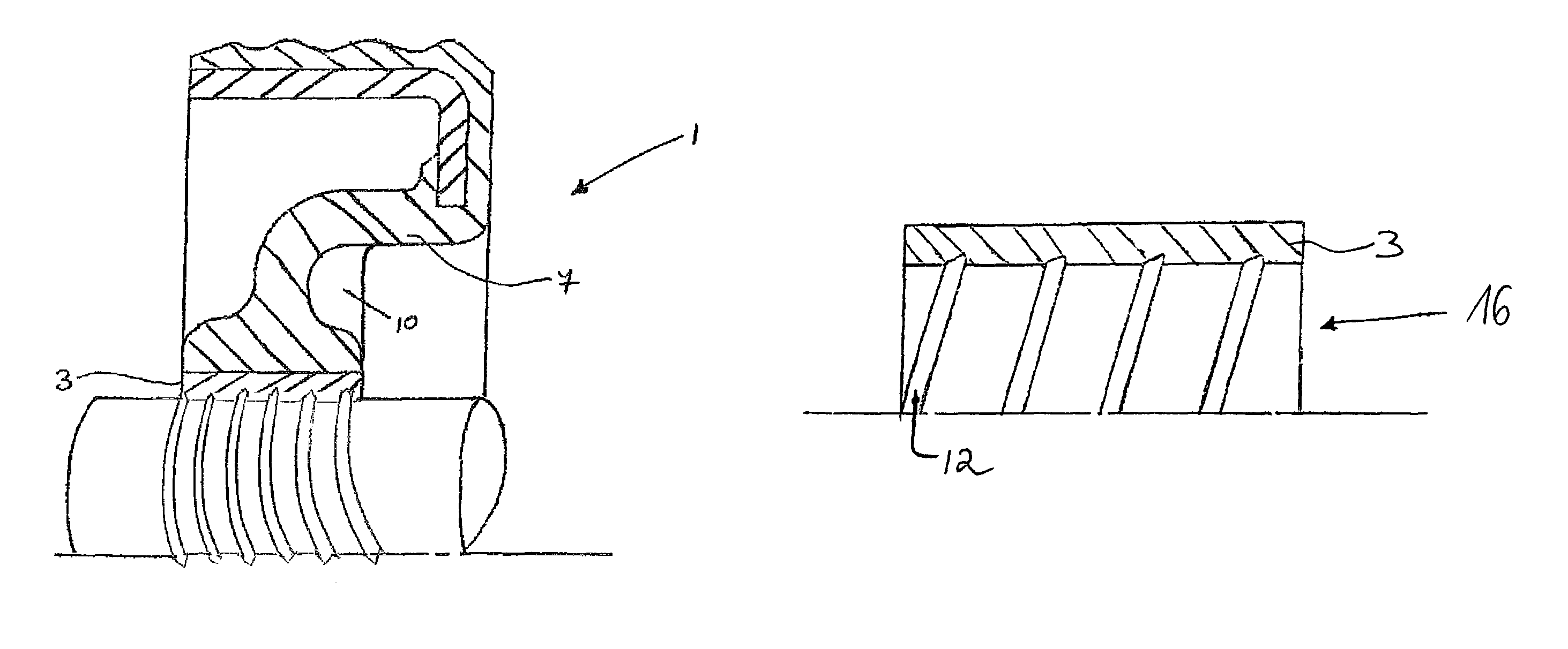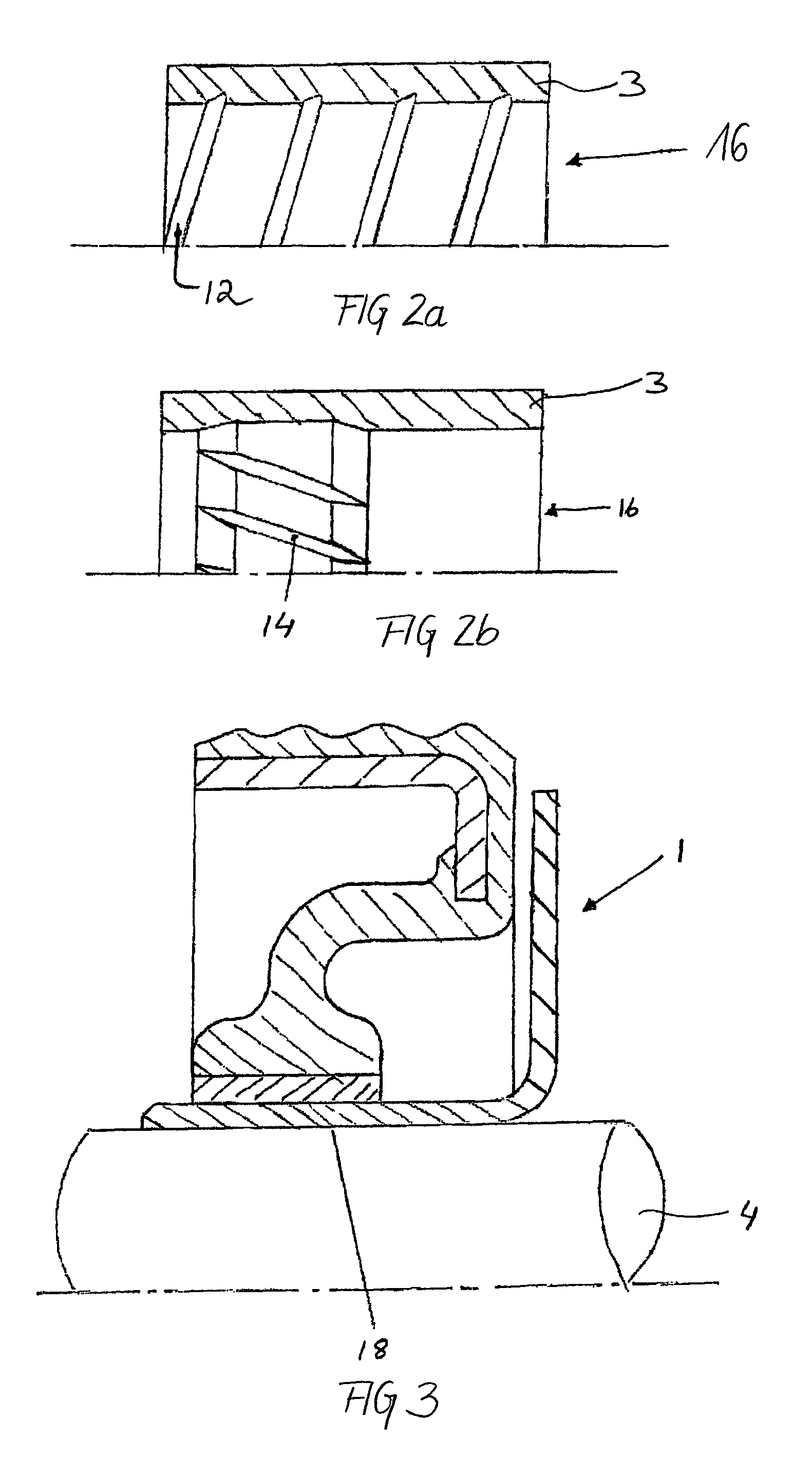Seal
a technology of sealing and sealing plate, applied in the field of sealing plate, can solve the problems of increased friction and heat generation at the seal interface, increased energy consumption, and increased energy loss, and achieve the effect of improving sealing performance and facilitating mounting of inventive seals
- Summary
- Abstract
- Description
- Claims
- Application Information
AI Technical Summary
Benefits of technology
Problems solved by technology
Method used
Image
Examples
Embodiment Construction
[0029]An example of a seal according to the invention is shown in FIG. 1a. The seal 1 comprises a sleeve-like section 3, which is adapted to be mounted around a rotatable component such as a shaft 4. The sleeve-like section 3 is connected to an outer casing 5 of the seal by means of a resilient section 7. The outer casing 5 is adapted to be mounted in e.g. a bore of a housing, and may (as shown) consist of a metal flange with a rubber outside diameter. Other variations are possible, such as a full rubber or a full metal casing. The outer casing 5 seals statically against the housing bore (not shown) and the sleeve-like section 3 provides dynamic sealing during rotation of the shaft 4. Such a seal may be used to seal a gap between a rotatable and a non-rotatable component and thereby retain fluid at a fluid side 6 of the seal in relation to an airside 9 of the seal.
[0030]According to the invention, low-friction dynamic sealing is obtained in that the sleeve-like section 3 is precisel...
PUM
 Login to View More
Login to View More Abstract
Description
Claims
Application Information
 Login to View More
Login to View More - R&D
- Intellectual Property
- Life Sciences
- Materials
- Tech Scout
- Unparalleled Data Quality
- Higher Quality Content
- 60% Fewer Hallucinations
Browse by: Latest US Patents, China's latest patents, Technical Efficacy Thesaurus, Application Domain, Technology Topic, Popular Technical Reports.
© 2025 PatSnap. All rights reserved.Legal|Privacy policy|Modern Slavery Act Transparency Statement|Sitemap|About US| Contact US: help@patsnap.com



